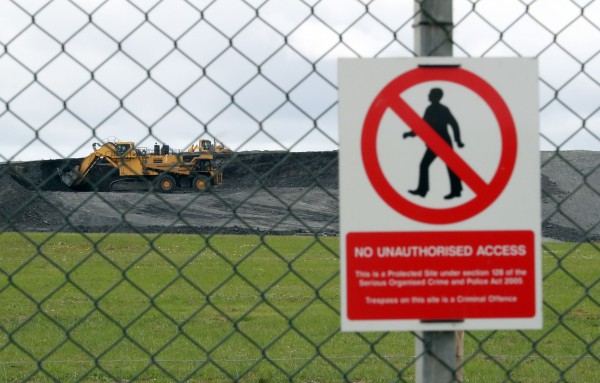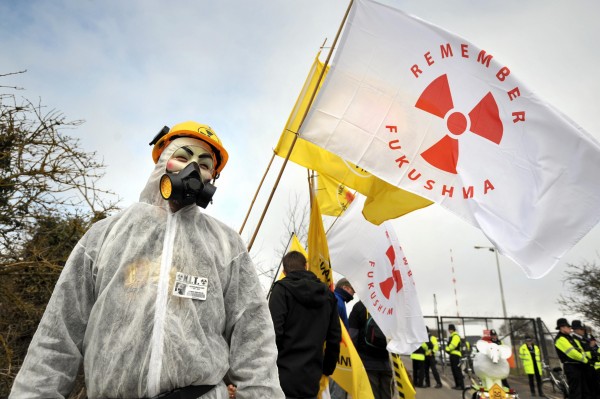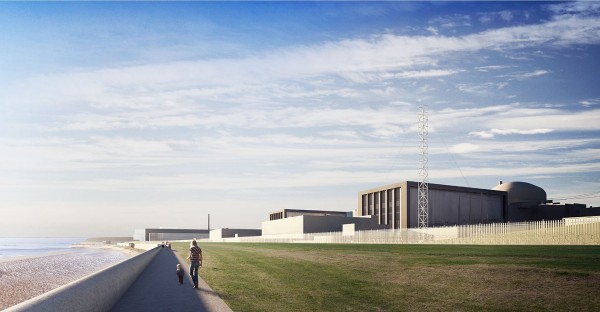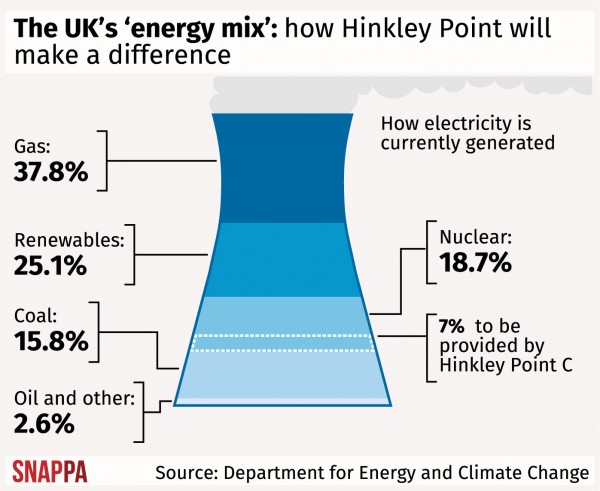Everything you need to know about Hinkley Point C
09/15/2016 / By fukushima

The Hinkley Point C (HPC) nuclear power station has finally been given the green light after a decade of planning and consultation.
Article by PA
The new nuclear reactor will be the first nuclear fission power station to be built in Britain for 20 years. It’s been a protracted process to get to this point, so here’s what you need to know.
Who’s involved?

The original project was conceived by French company EDF in 2008 along with three other nuclear power stations, after the Labour government had expressed a preference for nuclear in 2006.
French government-owned EDF currently owns 66.6% of the project, having sold the rest of its stake to Chinese state-owned China General Nuclear(CGN).
The Chinese have invested heavily in nuclear at home, with 35 reactors in operation and another 20 in construction. CGN will bring much needed capital to the project as well as expertise gained in the construction of the HPC project makes them a competent partner.
However, there have been concerns about the Chinese government owning a piece of the UK’s energy infrastructure by proxy, which caused Theresa May to put the decision on hold before the G20 summit earlier this month.
Why has it taken so long to be confirmed?

A combination of factors has caused delays in the project. Public consultation and planning applications stretched over four years and preliminary construction works began in 2014.
During this period, EDF began to rack up significant debts, delaying its decision to invest. Another investor was needed to get the project off the ground, and negotiations with CGN took even more time.
Nuclear energy also fell out of favour following the Fukushima disaster which left thousands in Japan without homes, making the public nervous about nuclear in the UK.
A group opposed to Hinkley, and Greenpeace, delivered a 300,000-name petition to Downing Street calling for the project to be scrapped, shortly after the go-ahead was announced.
How long will it take to get up and running?

Estimates put the cost of HPC at £18 billion. It will be operational by 2025, according to EDF.
Ministers have said they have imposed “significant new safeguards” for future foreign investment in critical infrastructure.
A statement said: “Following a comprehensive review of the Hinkley Point C project, and a revised agreement with EDF, the Government has decided to proceed with the first new nuclear power station for a generation.
“However, ministers will impose a new legal framework for future foreign investment in Britain’s critical infrastructure, which will include nuclear energy and apply after Hinkley.”
Do we really need it?

When complete, Hinkley will provide 7% of the UK’s energy. However, since the original application to build in 2008, the UK’s energy picture has changed dramatically.
As the Government will subsidise the cost of energy from Hinkley and other future power stations, it could edge renewable forms of energy production, many of which are no longer subsidised, out of the picture.
Professor Paul Ekins, deputy director of the UK Energy Research Centre, said: “Its costs have increased dramatically; those of renewables have halved, and advances in storage, interconnection and demand response will have solved the problem of intermittency by the time Hinkley comes on stream.
“Hinkley, at a total cost to consumers of nearly £30 billion over the lifetime of its guaranteed contract period, now represents appalling value for money.”
The project will boost the local economy by creating 25,000 jobs and over 500 apprenticeships. EDF has already heavily invested in local colleges providing nuclear training.
What else can we expect?

CGN and EDF have said they will work together on two more nuclear power stations at Sizewell in Suffolk, and Bradwell in Essex.
The Bradwell project has attracted criticism as CGN will take majority ownership and use a Chinese design and technology.
The Government is also considering the addition of small nuclear reactors to the UK’s energy mix. The emerging technology involves much smaller reactors which can be assembled offsite and grouped together to produce energy.
Read more at: aol.co.uk
Submit a correction >>
Tagged Under:
energy, Hinkley C, nuclear plant
This article may contain statements that reflect the opinion of the author
RECENT NEWS & ARTICLES
COPYRIGHT © 2017 FUKUSHIMAWATCH.COM
All content posted on this site is protected under Free Speech. FukushimaWatch.com is not responsible for content written by contributing authors. The information on this site is provided for educational and entertainment purposes only. It is not intended as a substitute for professional advice of any kind. FukushimaWatch.com assumes no responsibility for the use or misuse of this material. All trademarks, registered trademarks and service marks mentioned on this site are the property of their respective owners.




















